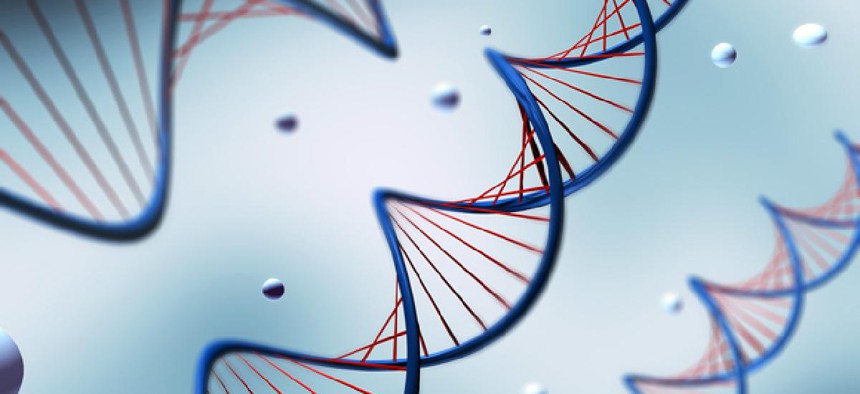To model the simplest microbe in the world, you need 128 computers

Sergey Mironov/Shutterstock.com
What a pathbreaking computer simulation tells us about the future of biotechnology.
Mycoplasma genitalium has one of the smallest genomes of any free-living organism in the world, clocking in at a mere 525 genes. That's a fraction of the size of even another bacterium like E. coli, which has 4,288 genes. M. genitalium's diminutive genome made it the first target for Stanford and J. Craig Venter Institute researchers who wanted to simulate an organism in software.
The bioengineers, led by Stanford's Markus Covert, succeeded in modeling the bacterium, and published their work last week in the journal Cell. What's fascinating is how much horsepower they needed to partially simulate this simple organism. It took a cluster of 128 computers running for 9 to 10 hours to actually generate the data on the 25 categories of molecules that are involved in the cell's lifecycle processes.
This has a direct bearing on one of the big questions about technology over the next 50 years: how successful will biotechnologies be? On the one hand, we've made tremendous strides in describing the molecular processes that power life. I'm not just talking about genomics, but whole sets of other molecules and interactions (see: proteomics, metabolomics, epigenomics, transcriptomics). The new work stands as a testament to how far we've come. We can now simulate most known interactions within the cell: how the code of its DNA becomes proteins, how those proteins interact, and how the cell uses energy.
Read more at The Atlantic.
Read more at The Atlantic.
(Image via Sergey Mironov/Shutterstock.com)






